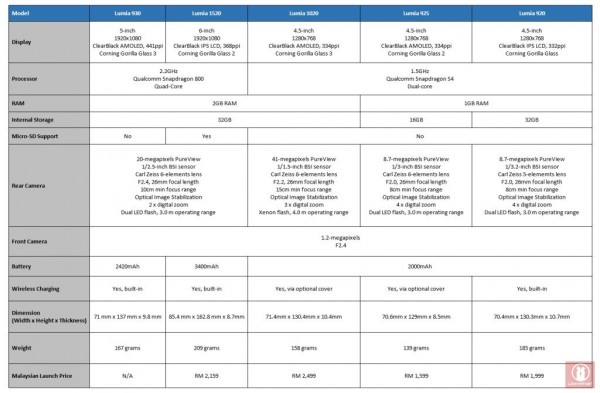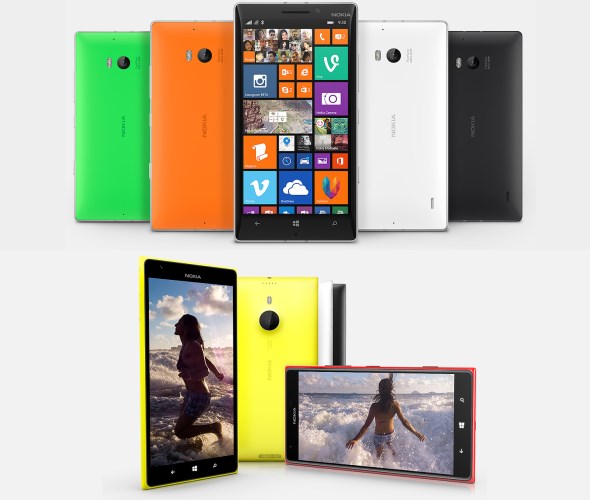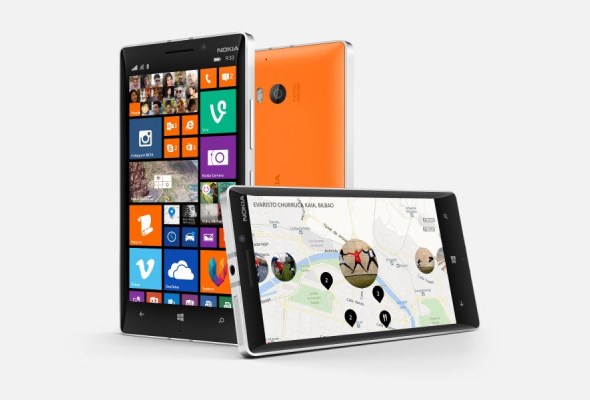Last week at Microsoft Build Developer Conference, Nokia has announced a number of new smartphones under its Lumia family that will become the first batch of Windows Phone 8.1 devices to be released into the market. One such model is the Lumia 930, which has now become the company’s new flagship device.
While there is no indication so far on whether Lumia 930 will be released in Malaysia or not, we believe that it is now a good time to compare the new kid in the block against its predecessors. Jump in to see how their technical specifications fare against each other.
It is interesting to note that Nokia has actually released plenty of Windows Phone 8 flagship devices over the past 1 and half year – starting with Lumia 920 in the Q4 of 2012. In fact, the number is much bigger if you include market-specific models such as Lumia Icon (US), and Lumia 920T (China). To keep this list relevant to our market though, we decided to keep the list limited to flagship devices that were launched in Malaysia.
So, here you go:
 Click on the table to enlarge it.
Click on the table to enlarge it.
In general, it is not absurd to call the Lumia 930 as the smaller version of Lumia 1520. After all, it still has a full HD display together with the same 2.2GHz quad-core processor and 2GB of RAM as well as the 20-megapixels PureView camera. Both devices are also equipped with four microphones that allows them to perform directional stereo recording which will be soon enhanced further with the support for Dolby Surround Sound Capture that will come together with Lumia Cyan update.
However, you can immediately see there are some differences between both devices when you compare their specifications thoroughly. One of the obvious difference between the two high-end devices is their physical design.
 [Top] Nokia Lumia 930. [Bottom] Nokia Lumia 1520.
[Top] Nokia Lumia 930. [Bottom] Nokia Lumia 1520.
Not only that Lumia 930 is thicker than Lumia 1520, the Lumia 930 also features a combination of aluminium frame and polycarbonate body (identical to Lumia 925) while the Lumia 1520’s body is fully made of polycarbonate. Lumia 930 also uses a different display technology than Lumia 1520 and apparently has a higher level of pixel density as well.
However, it turns out that Lumia 930 is not able to support Nokia Glance feature due to hardware limitation. Additionally, there is no Micro SD card slot on Lumia 930 as well which could be a deal breaker for those who love to carry around extra contents for their smartphone.
Nevertheless, it is pretty clear from the specifications alone that the Lumia 930 is just like the Lumia 1520: both of them are the most advanced smartphone in Nokia’s Lumia family, as of now. Just that Lumia 930 might be more comfortable to be placed into your pocket as it is much more compact than the humongous Lumia 1520.
The final verdict is still down to user’s day-to-day, hands-on experience though which we hope we will be able to do so in the near future. Of course, that’s if Nokia release the Lumia 930 into our market.
Follow us on Instagram, Facebook, Twitter or Telegram for more updates and breaking news.



